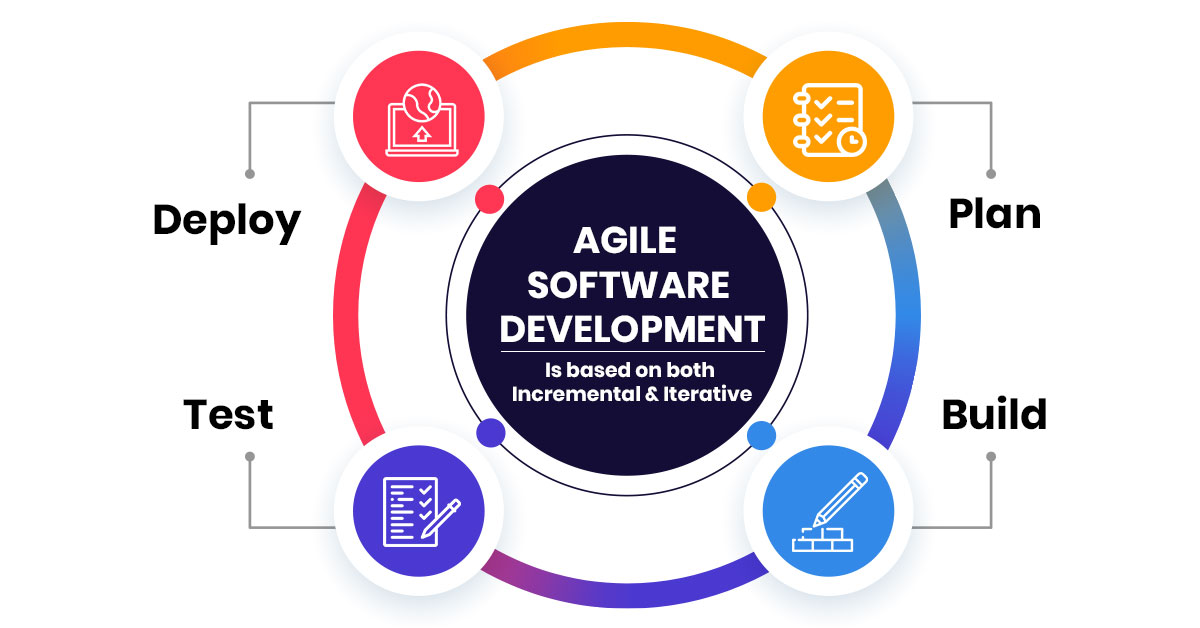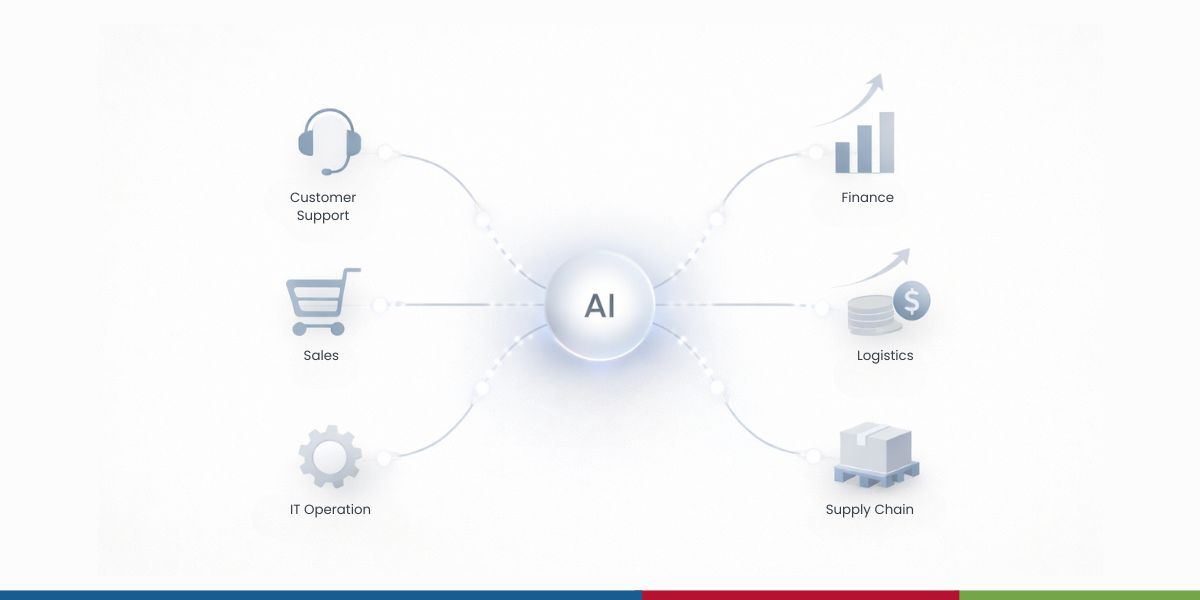Agile Software Development – Is based on both Incremental & Iterative

4 min read | By Admin | 22 May 2021 | Software trends
The fruitful process to turn on the vision of business needs into beneficial software solutions implies – Agile software development methodology, and it is the method of productive approach for software project management which is used in software development. Competently, agile software development is based on both iterative and incremental development in agile methodology.
The blend of these two iterative and incremental development approaches has been enduring strength and extensively utilized for large software development efforts by focusing on the process adaptability and customer satisfaction through speedy delivery of the product.
The iterative and incremental development permits software developers to utilize what they have learned during the software development of earlier parts and the versions of the system.
To comprehend how agile software development is based on incremental and iterative, let’s learn more about it in this article.
What is Incremental Development?
The incremental development process involves delivering the components of the software in parts and each increment represents a complete subcommittee of activity and is fully coded and tested. The complete functional modules of the process are configured over time, each added to what has already been produced.
Incremental development is separated by four phases:
- Inception Phase
- Elaboration Phase
- Construction Phase
- Transition Phase
At each incremental development, the key phases of the software development life cycle (SDLC), incorporating functional specification, design, implementation and testing are reiterated.
The initial increment is the stripped-down version of the complete system. This stripped-down version helps the customer to evaluate the released increment and suggest modifications which can be implemented in later increments.
Features of Incremental Development
- Creates working software quickly and early during the software life cycle.
- Incremental development is progressive growth, which makes it easy to revisit different compartmentalized stages.
- It is easier to test and debug during a smaller iteration.
- Different completion times for different sections of the same project.
- Easier to manage risk because risky pieces are identified and handled during its iteration.
What is Iterative Development?
The iterative model is a specific implementation of a software development life cycle that primarily focuses on a simplified implementation that gains more complexity and a broader feature set as it continues on toward the final system.
The iteration involves the redesign and implementation of the iteration are simple, straightforward, and modular, supporting redesign at every stage.
The process of Iterative Model is cyclic, unlike the more traditional models that focus on a rigorous step-by-step process of development with five phases.
- Planning
- Analysis and Design
- Implementation
- Testing
- Evaluation
Typically iterative development is used in conjunction with incremental development in which a longer software development cycle is split into smaller segments that build upon each other.
By working iteratively, the project team goes through a cycle where they evaluate with each iteration, and determine what changes are needed to produce a satisfactory end product.
Features of Iterative Development
- Iterative development is easily adaptable to the ever changing needs of the project as well as the client.
- It is more cost effective to change the scope or requirements in the Iterative model.
- Some working functionality can be developed early in the software development life cycle.
- Testing and debugging during smaller iterations is easy.
- Risks are identified and resolved during iteration and each iteration is easily managed.
Why is Agile Software Development is Based on Both Iterative and Incremental?
Agile development approach incorporates the iterative and incremental software development that is modeled around a gradual increase in feature additions and a cyclical release and upgrade pattern.
It is iterative because it plans for the work of one iteration to be improved upon in subsequent iterations. It is incremental because completed work is delivered throughout the project.
Agile development such as Scrum, involves a series of short iterative development cycles, and continuous working software demos, user feedback, review and the incremental addition of features at the end and in between iteration.
During a development “iteration” it builds several features; some may be iterating to improve, modify or remove existing functionality, others may be incrementally adding new functionality.
The Incremental and Iterative Development Consists of Four Phases
- Inception Phase: It includes a higher-level look at the project scope, tangible and intangible requirements, and risks.
- The Elaboration Phase: It takes the risks you identify in the Inception Phase and starts with the working architecture that meets non-functional requirements.
- Construction Phase: Takes the architecture you put in place finished code that passes the iterative model already.
- Transition Phase: It pushes the final product to production.
When it comes to complex software development, each technique fills in the gaps the other creates. In using the two together, you can complete your software in increments while delivering completed work throughout the course of the project.
On the whole
Neither iterative or incremental is all that great alone. But together as they are with Agile software development, they are fantastic. Therefore, no doubetly, agile software development is based on iterative and incremental.
Don’t hesitate to leverage these into your software development, and for the extraordinary solutions in software development, do contact Colan Infotech.
FREQUENTLY ASKED QUESTIONS
In Agile Software Development, “Iterative” refers to the practice of repeating a sequence of development activities multiple times until the desired outcome is achieved. It allows teams to deliver a minimum viable product early in the project and to continuously improve upon it.
Agile Software Development benefits both teams and customers in several ways: It promotes customer satisfaction by delivering working software frequently and allowing customers to provide feedback and make changes as the project progresses. It fosters collaboration and communication between team members and with customers, leading to better-quality software and increased productivity.
Yes, Agile Software Development can be used for large projects, although it may require some modifications to the standard Agile methodology. For example, large projects may require breaking down the project into smaller, manageable chunks, and employing multiple Agile teams to work on each chunk.
The key principles of Agile Software Development include: Customer satisfaction through continuous delivery of valuable software Working software as the primary measure of progress Collaboration and cooperation between customers, developers, and stakeholders Responding to change over following a fixed plan Sustainably delivering software through disciplined and continuous improvement.
Agile Software Development can be seen as a way of approaching the entire software development lifecycle, from requirements gathering to deployment and maintenance. It emphasises iterative and incremental development, with a focus on delivering value to the customer as early and often as possible.
The latest from our editors
Join over 150,000+ subscribers who get our best digital insights, strategies and tips delivered straight to their inbox.



